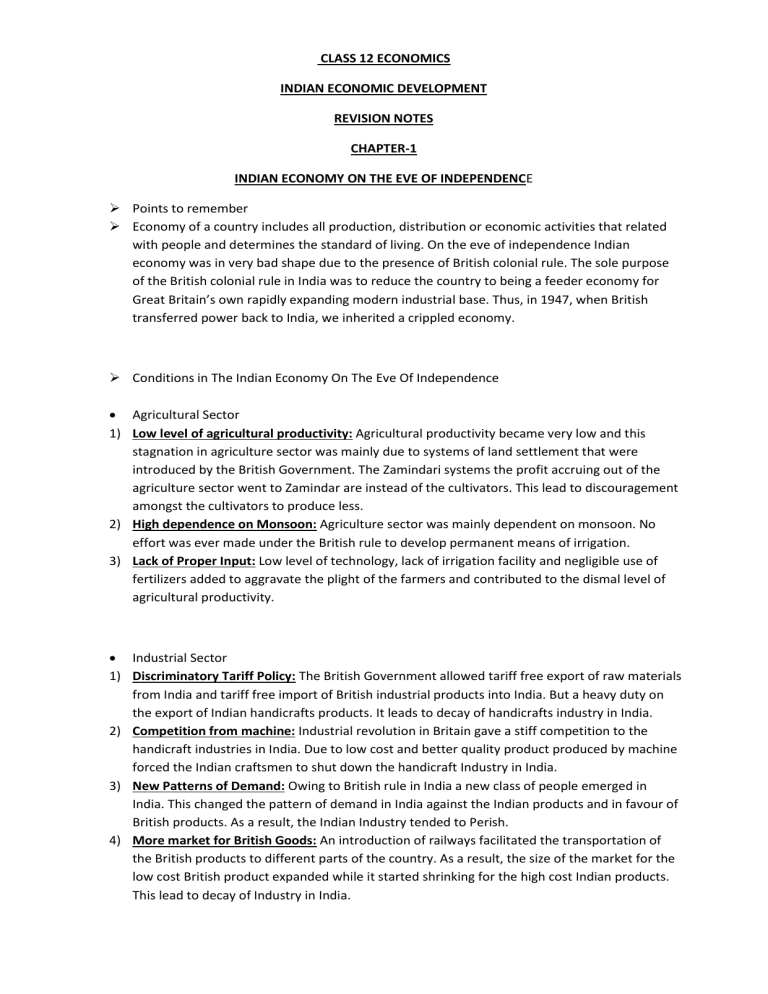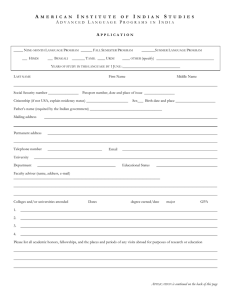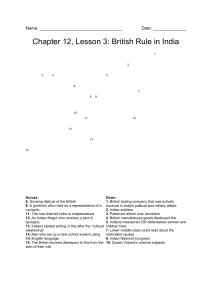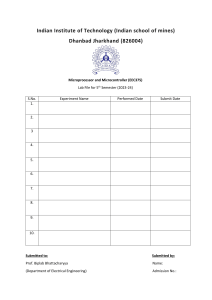
CLASS 12 ECONOMICS INDIAN ECONOMIC DEVELOPMENT REVISION NOTES CHAPTER-1 INDIAN ECONOMY ON THE EVE OF INDEPENDENCE Points to remember Economy of a country includes all production, distribution or economic activities that related with people and determines the standard of living. On the eve of independence Indian economy was in very bad shape due to the presence of British colonial rule. The sole purpose of the British colonial rule in India was to reduce the country to being a feeder economy for Great Britain’s own rapidly expanding modern industrial base. Thus, in 1947, when British transferred power back to India, we inherited a crippled economy. Conditions in The Indian Economy On The Eve Of Independence Agricultural Sector 1) Low level of agricultural productivity: Agricultural productivity became very low and this stagnation in agriculture sector was mainly due to systems of land settlement that were introduced by the British Government. The Zamindari systems the profit accruing out of the agriculture sector went to Zamindar are instead of the cultivators. This lead to discouragement amongst the cultivators to produce less. 2) High dependence on Monsoon: Agriculture sector was mainly dependent on monsoon. No effort was ever made under the British rule to develop permanent means of irrigation. 3) Lack of Proper Input: Low level of technology, lack of irrigation facility and negligible use of fertilizers added to aggravate the plight of the farmers and contributed to the dismal level of agricultural productivity. Industrial Sector 1) Discriminatory Tariff Policy: The British Government allowed tariff free export of raw materials from India and tariff free import of British industrial products into India. But a heavy duty on the export of Indian handicrafts products. It leads to decay of handicrafts industry in India. 2) Competition from machine: Industrial revolution in Britain gave a stiff competition to the handicraft industries in India. Due to low cost and better quality product produced by machine forced the Indian craftsmen to shut down the handicraft Industry in India. 3) New Patterns of Demand: Owing to British rule in India a new class of people emerged in India. This changed the pattern of demand in India against the Indian products and in favour of British products. As a result, the Indian Industry tended to Perish. 4) More market for British Goods: An introduction of railways facilitated the transportation of the British products to different parts of the country. As a result, the size of the market for the low cost British product expanded while it started shrinking for the high cost Indian products. This lead to decay of Industry in India. Foreign Trade 1) Due to discriminative tariff policy adopted by the British Government, India became net exporter of raw material and primary products. On the other hand, it became net importer of finished goods reproduced by the British Industry. 2) Composition of exports and imports showed the backwardness of Indian economy. Exports and imports were largely restricted to Britain only due to monopoly control of India’s foreign trade. 3) Surplus profit made and account of foreign trade during the British rule was distributed on administrative and as well as on war expenses. It was only used to increase the pursuits of the British Government. Demographic Condition 1) High birth and High death rate implied low survival rate, which was nearly 8 per thousand per annum. 2) Life expectancy was as low as 32 years which shows the lack of health care facilities, lack of awareness as well as lack of means for health care. 3) Literacy rate was as low as 16 per cent, which reflects the social and economic backwardness of the country. Occupational Structure 1) Agricultural was the principal source of occupation and about 72.7 per cent of working population was engaged in agriculture. 2) Only 10.1 Per cent of the working population were engaged in the manufacturing sector, which showed the backwardness of Indian Industry at the time of Independence. 3) Only 17.2 per cent of the working population were engaged in the service sector, which also proved the slow growth of tertiary sector at the time of Independence. 4) There was an unbalanced growth of Indian economy at the time of Independence. Infrastructure 1) There was some infrastructural development during the British in the area of transport and communication. 2) Introduction of railways was a major breakthrough followed by the development of some ports and the construction of some roads. 3) But the main motive3 of the British Government was to faster the interest of the British Government rather than to accelerate the growth of Indian economy. 4) There was transition from barter system of exchange to monetary system of exchange, which facilitated division of labour & large scale production.





